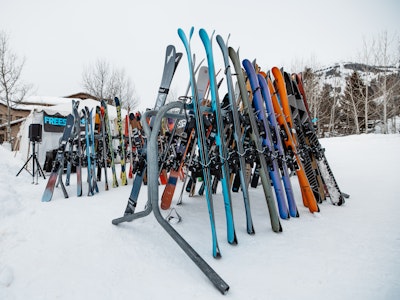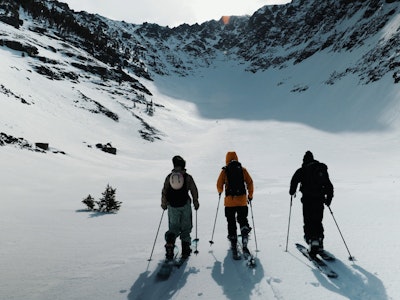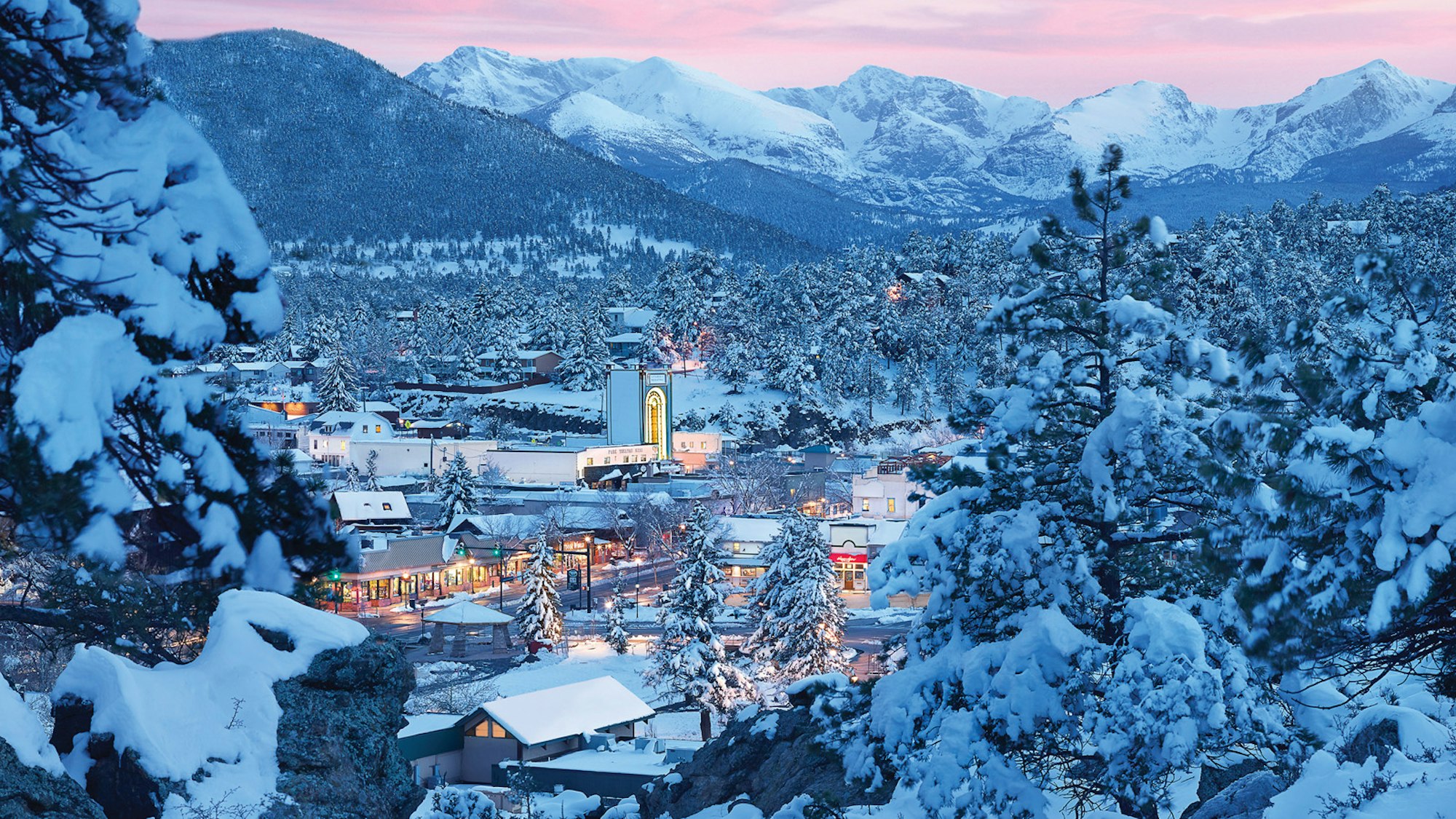Big lines in Rocky Mountain National Park plus avalanche education, curry chicken and hoppy brews make Estes Park a bonafide ski-touring hub.
WORDS • Matt McDonald
After you drop into Rocky Mountain National Park’s (RMNP) Dragon Tail Couloir, slashing quick turns into the line’s 50-degree headwall, Emerald Lake comes into view about 1,500 feet below. White in winter, iced blue-gray in spring, the lake marks the entrance to Tyndall Gorge, a chunky U-shaped lesson in glaciology. Across the gorge, Hallett Peak dominates your view, its sheer north face hulking in a Yosemite-meets-Middle-Earth kind of way. Dark monoliths flank the rest of your descent. You even get to slalom the wide-eyed snowshoers on the way back to the car!
Dragon Tail is just a sampler of the primo terrain that beckons backcountry skiers to the mountains of northern Colorado and the nearby town of Estes Park. Long recognized as an escape from the metro areas to the south and a base camp for adventures in RMNP, Estes Park is more than an oasis. Six-thousand people call the place home, and it’s one of Colorado’s most popular tourism destinations. Options for lodging, shopping, eating and drinking abound.
While Estes Park bustles like summer camp in the warm months, it feels more raw and real when the mountains turn white. The ski touring options are endless, with relatively easy access to terrain for all ability levels. Added bonus? You’re a long way from I-70.
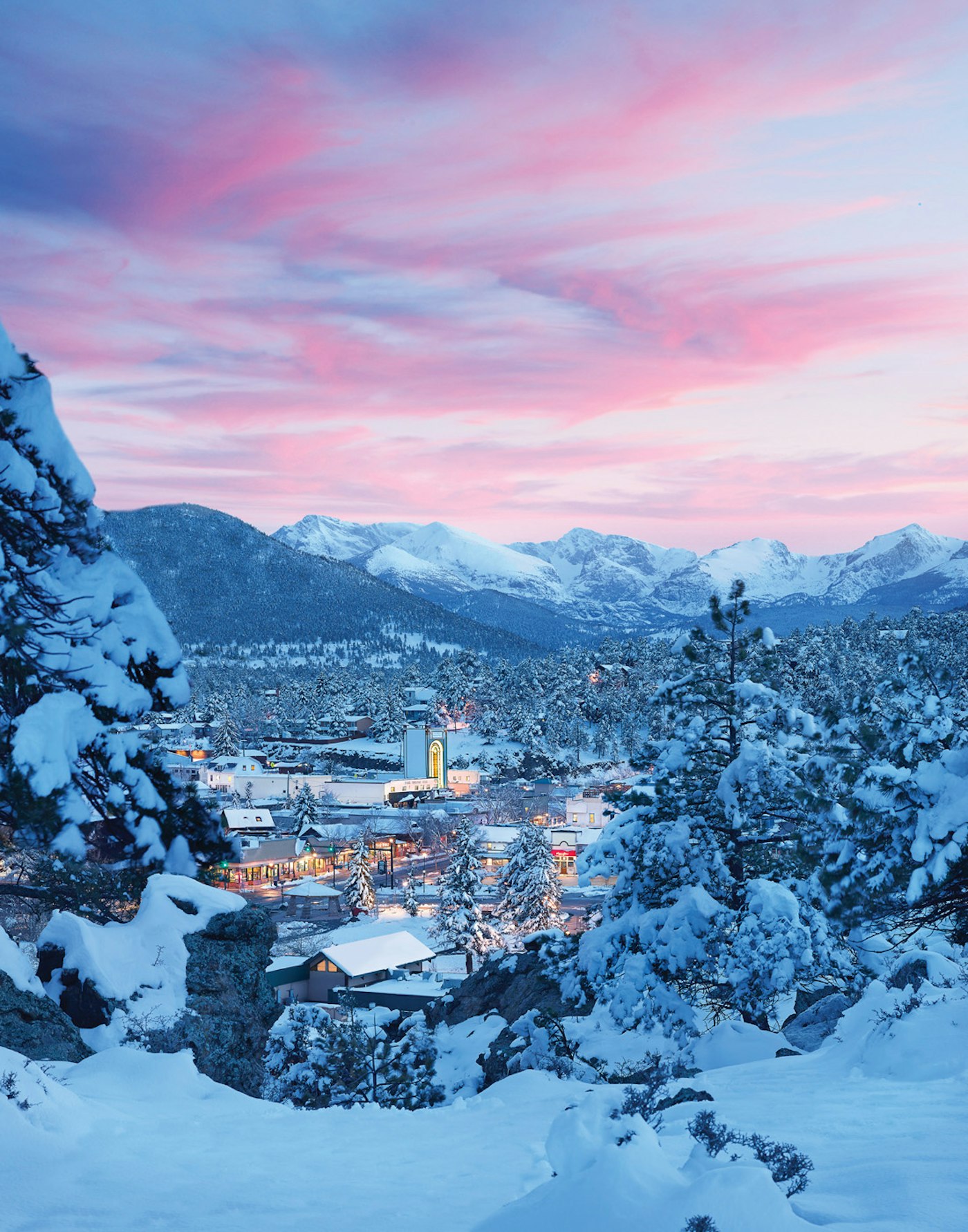
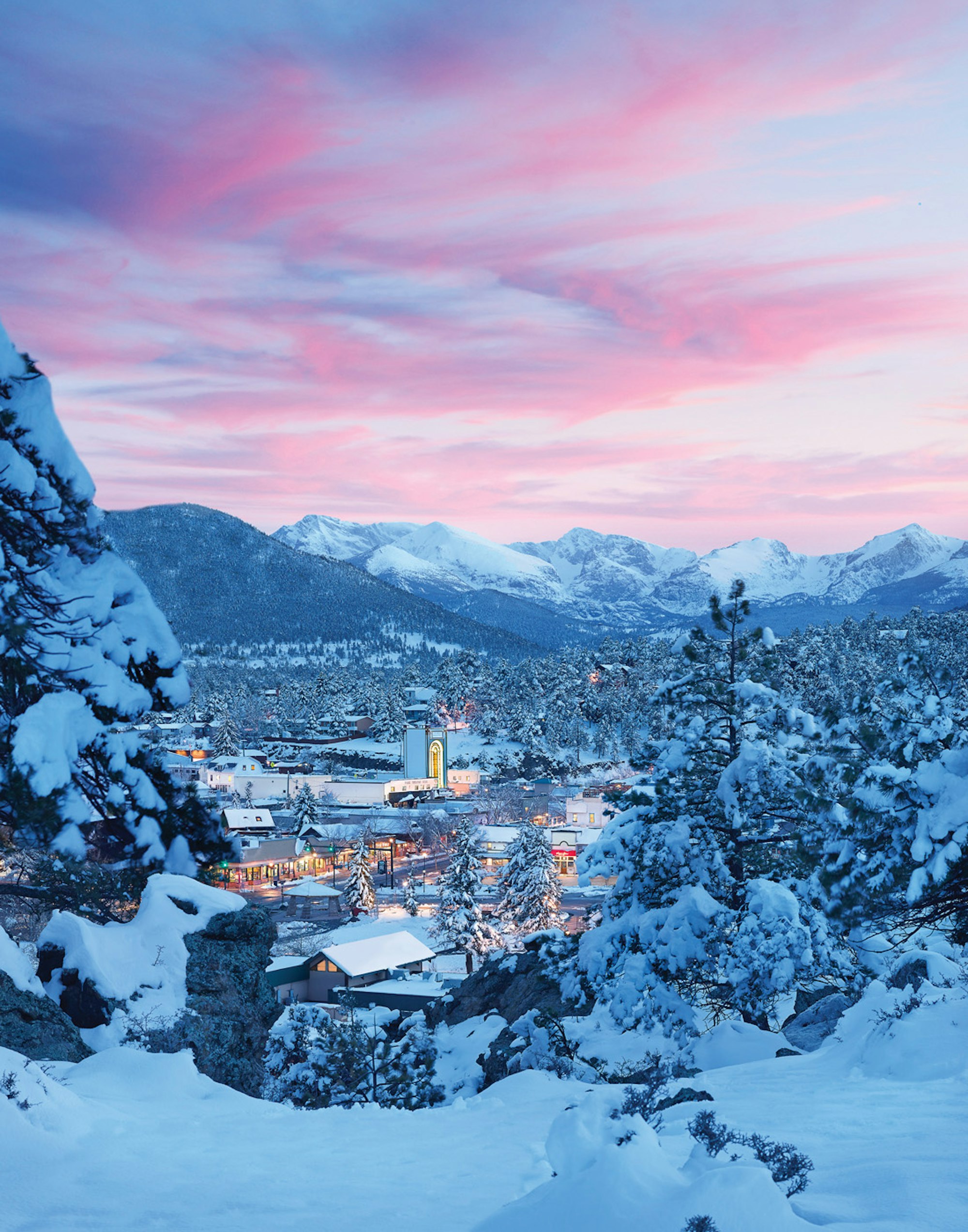
Estes Park in mid-winter. | PHOTO: courtesy of Visit Estes Park
Where to get schooled
Estes Park has grown into one of those little-less suburban, little-more mountain town outdoor Meccas. Proof: Famed climber Tommy Caldwell lives there. As such, it’s as much a base camp for DIY adventuring as it is for education and adventure companies. In winter, that means avalanche safety training or guided ski touring.
Meet Colorado Mountain School (CMS). With a base in Estes Park—plus an on-site hostel—CMS has been leading ski education and trips in the Colorado Rockies since 1981. My day-job boss in Golden, Colorado, got his AIARE 1 with CMS in Rocky Mountain National Park. So did another colleague and two buddies. Whether you’re looking for free avy awareness, companion rescue or a hut-based Level 2, CMS can facilitate.
Just looking for a guide to show you around? CMS also offers full-day and overnight ski tours of classic Rocky Mountain National Park zones.
Where to ski
Dragon Tail holds all sorts of appeal whether you’re a seasoned couloir hunter or an aspiring big-mountain skier with dialed friends. It also sees lots of traffic once the snowpack settles in the spring. The approach is only a couple miles, and if you’re confident in the conditions, skinning up the shoulder of Flattop Mountain saves you a bootpack. Multiple entrances give you a pucker-worthy start, but the line’s latter two-thirds is wide and not all that steep. The next couloir down the ridge, Dead Elk, is more technical and often includes a rappel, while Banana Bowl gives you a mellower alternative on Flattop.
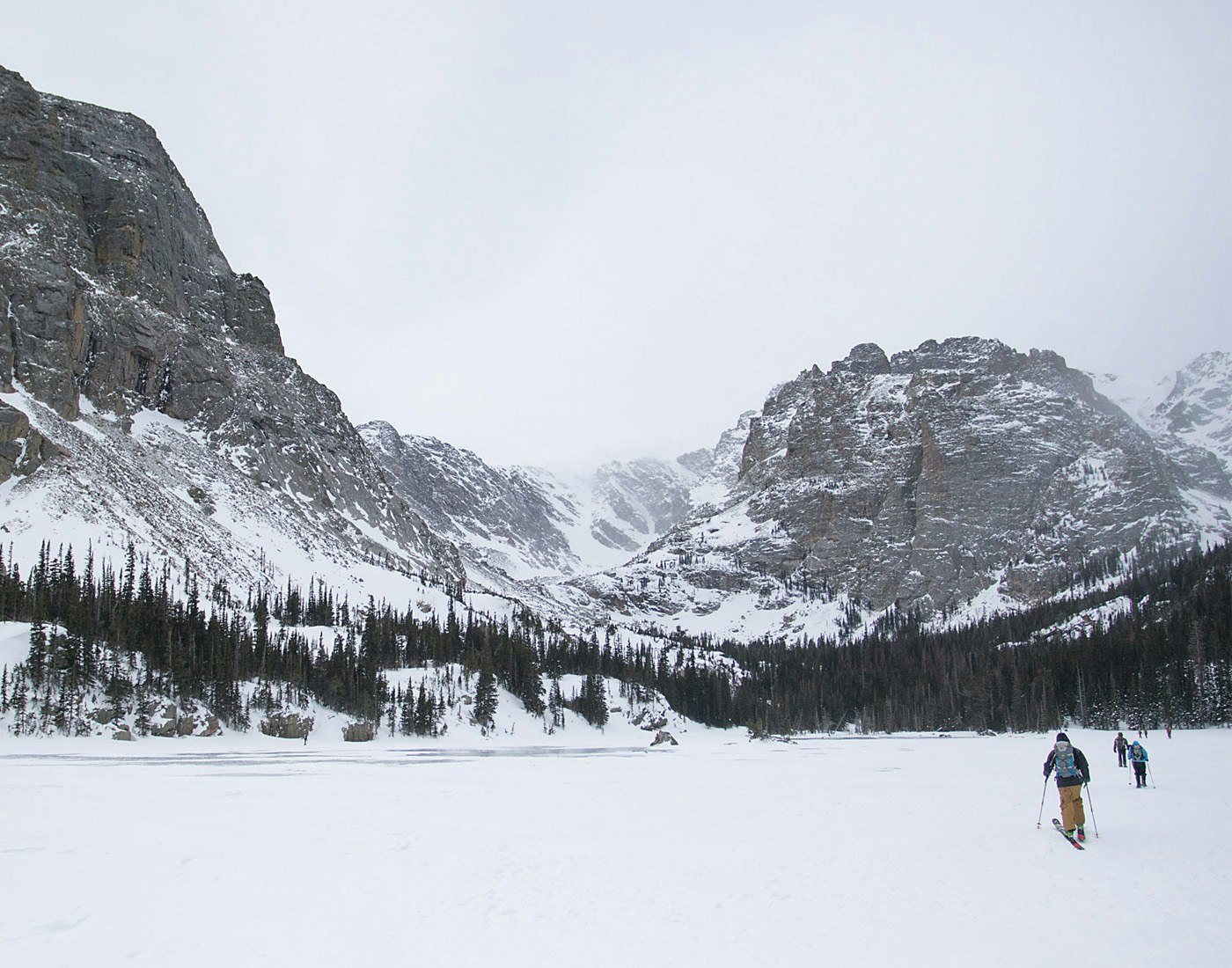
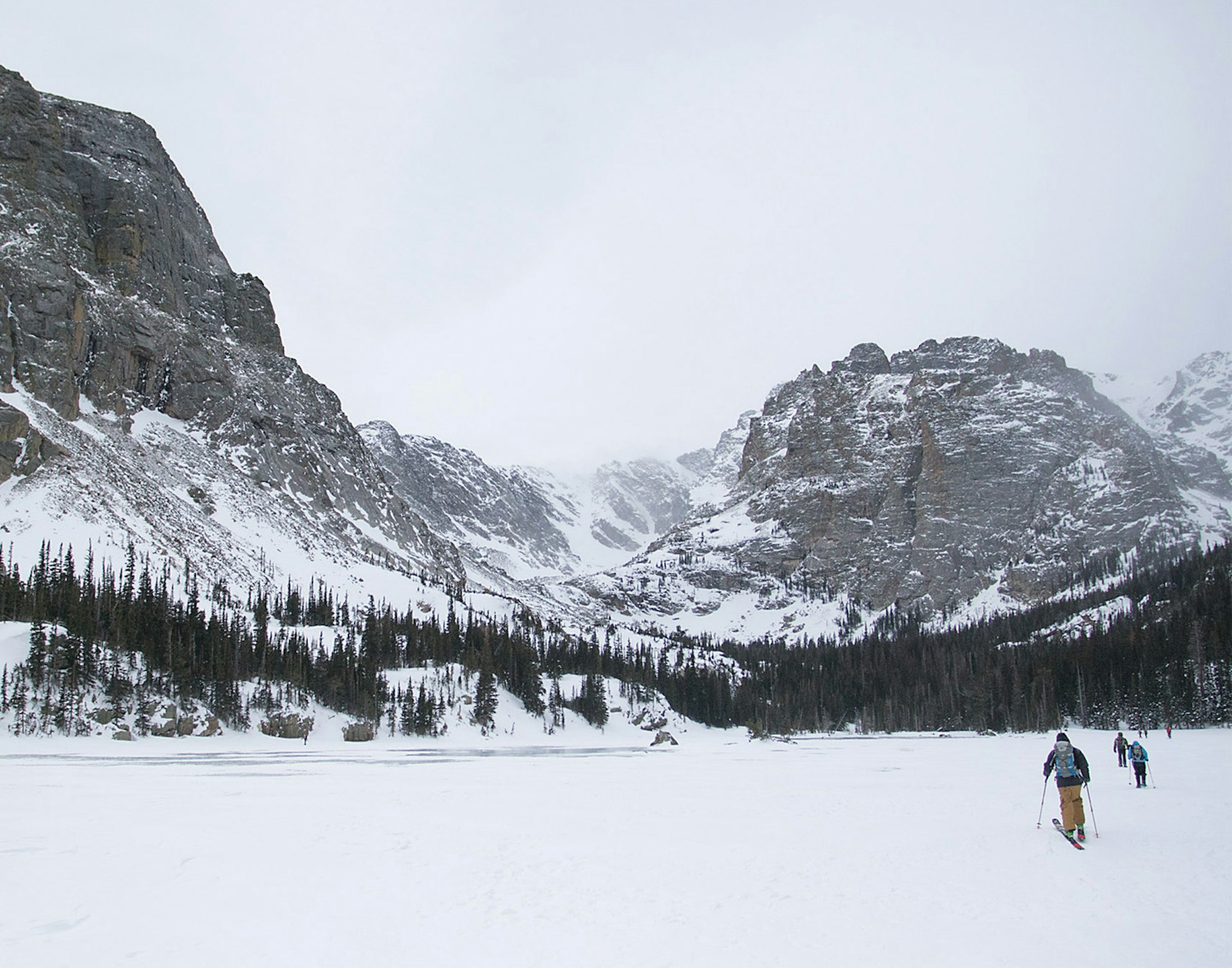
Trekking into Rocky Mountain National Park. | PHOTO: Dan Sohner
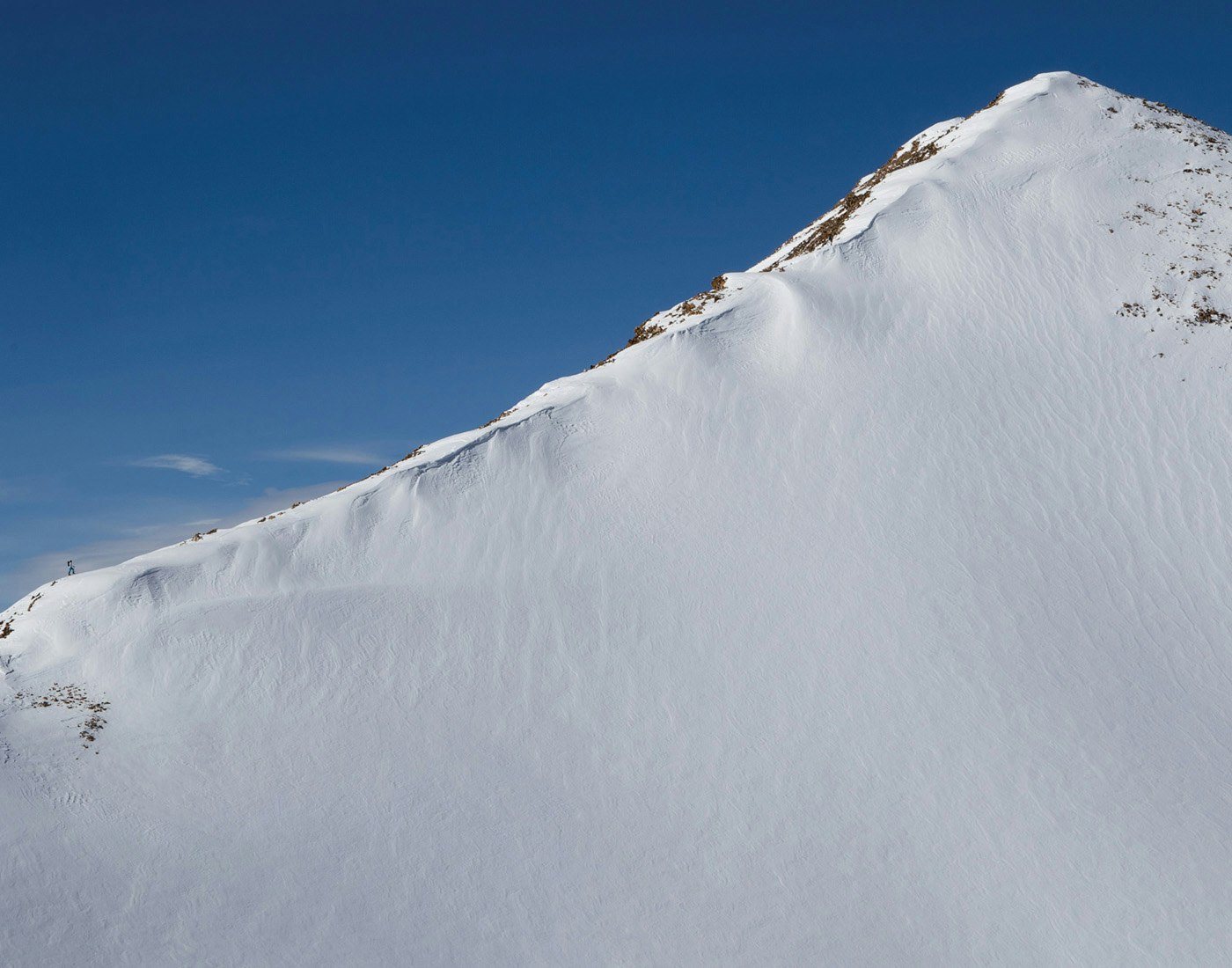
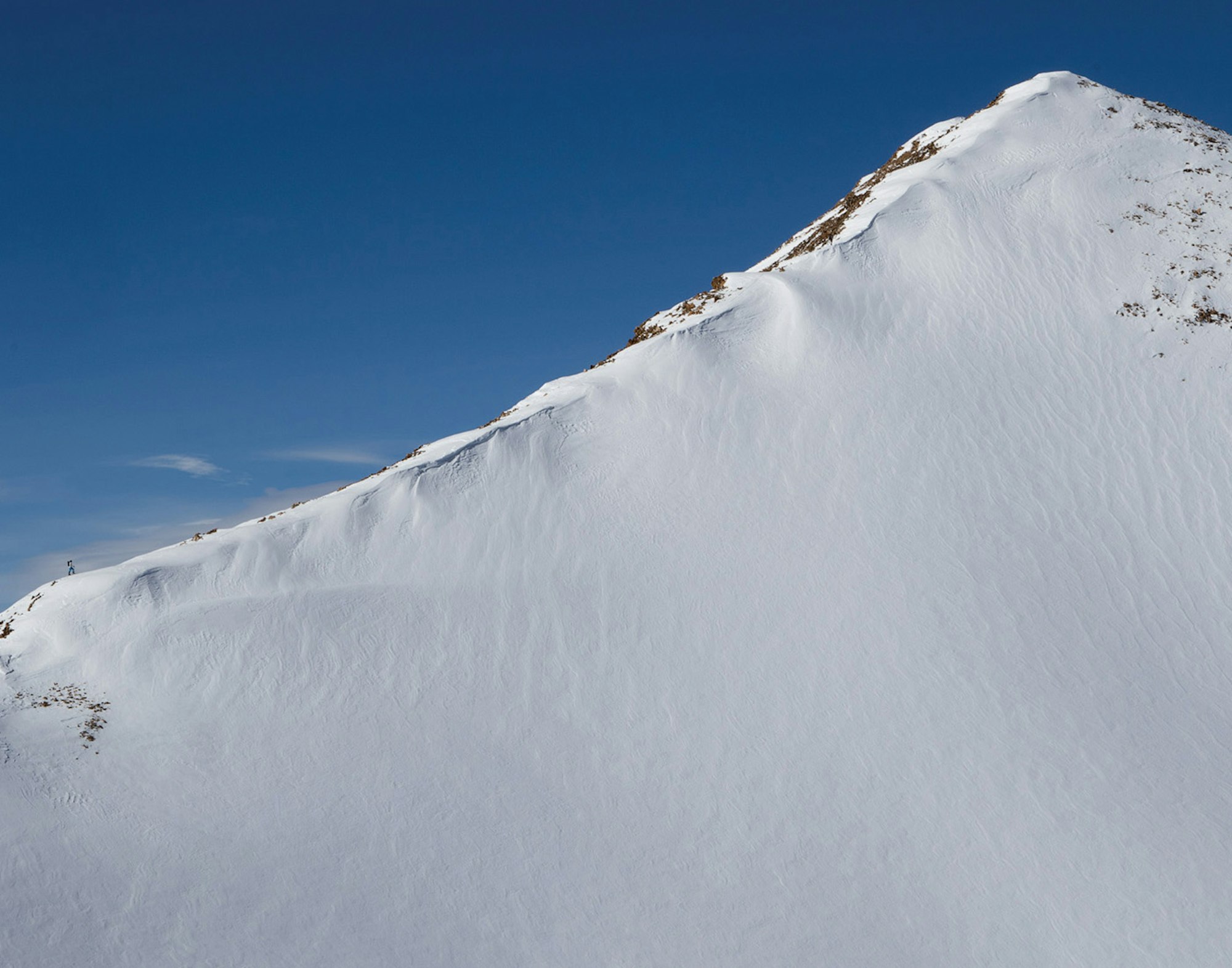
SKIER: Austin Porzak | PHOTO: Dan Sohner | LOCATION: Mount Cumulus, Rocky Mountain National Park, CO
While these lines feel like crown jewels, Estes Park’s most popular backcountry skiing zone is Hidden Valley. An abandoned ski area, Hidden Valley offers mellow skinning, generally safe conditions, and options for tree shots or open bowls. Access the area by following Highway 36 out of town. Stay on Trail Ridge Road once you enter the park.
Our sleeper pick? Tiny Allenspark. Rather than entering Rocky Mountain National Park to the west, head south on Highway 7 for 15 miles. Turn off the only street through “town” onto Ski Road (for real). This area is home to another abandoned ski area project, Rock Creek, and a couple of mellow peaks with descents on multiple aspects: St. Vrain Mountain and Meadow Mountain. Hint: do some Google Earth recon before you go. The trees can be thick in these parts.
Where to eat and après
Colorado shares two important qualities with Nepal and the Himalayan pocket of India: big mountains and east Indian food. Estes Park is a direct reflection. On Elkhorn Avenue, you’ll find inexpensive, authentic cuisine that could make you forget which mountains you’re gawking at out the window. Two hole-in-the-wall joints, Nepal’s Cafe and Himalayan Curry and Kebob, offer portions of curry chicken, momos and naan that satisfy your need to gorge after a ski tour.
For imbibing, you’ve got just about as many options as you do for skiing. Duh—this is Colorado. Estes Park Brewery, Rock Cut, Lumpy Ridge and Avant Garde Aleworks all fit the bill as microbrew watering holes with worthy IPAs, wintery stouts and shooters of the “drink local” ilk.
If your ski trip won’t be complete without firewater—mine usually aren’t—head to Elkins Distilling Co. Elkins started operating in 2016, and they’ll pour you a taster or a cocktail with brown water spelled the right way: w-h-i-s-k-y.
To learn more about visiting Estes Park, Colorado, click here.
This story originally appeared in FREESKIER 22.3, The Backcountry Issue.

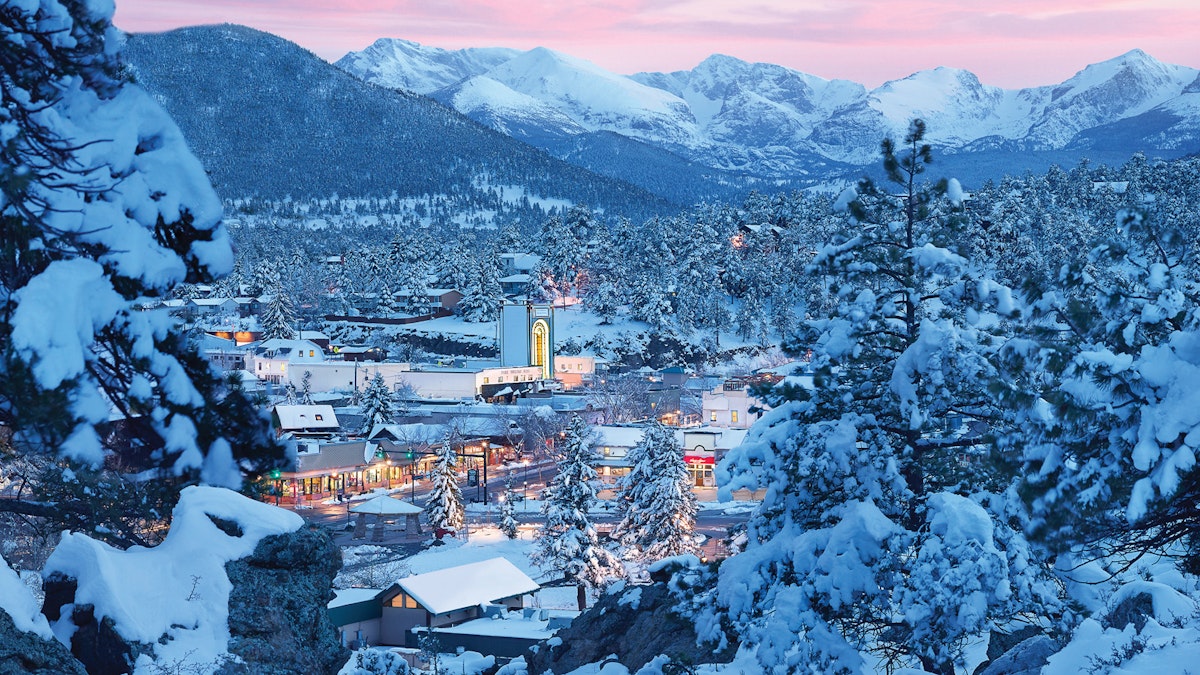
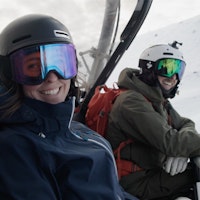
![[GIVEAWAY] Win a Head-to-Toe Ski Setup from IFSA](https://www.datocms-assets.com/163516/1765920344-ifsa.jpg?w=200&h=200&fit=crop)
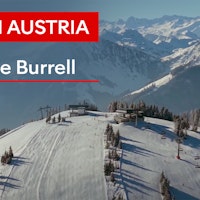
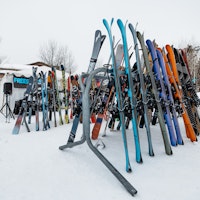
![[GIVEAWAY] Win a Legendary Ski Trip with Icelantic's Road to the Rocks](https://www.datocms-assets.com/163516/1765233064-r2r26_freeskier_leaderboard1.jpg?auto=format&w=400&h=300&fit=crop&crop=faces,entropy)
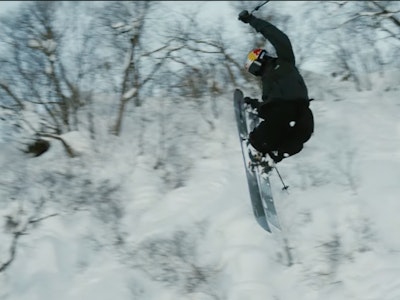

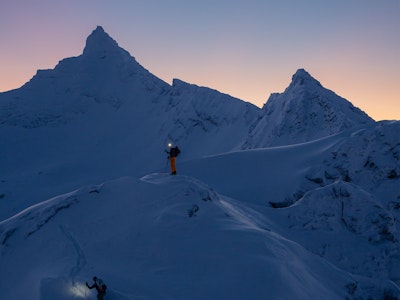
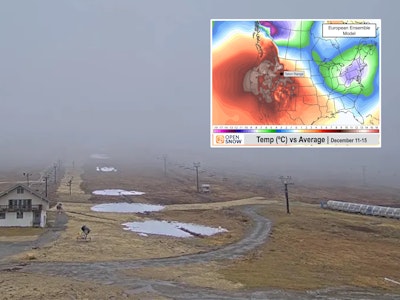
![[GIVEAWAY] Win a Head-to-Toe Ski Setup from IFSA](https://www.datocms-assets.com/163516/1765920344-ifsa.jpg?auto=format&w=400&h=300&fit=crop&crop=faces,entropy)
